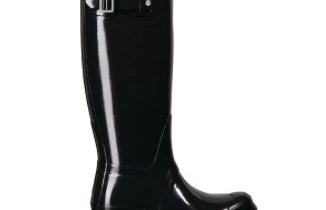You know what I want to talk about: the Wellington boot. If you told me two years ago that I’d be seeing Addison Rae walking the streets of Hollywood Boulevard in a pair of black wellies, then I’d say, ‘who the hell is Addison Rae?’ But in all seriousness, when did wellies become such a fashion statement?
When it comes to wellies, Hunter is undeniably the staple brand that defines the boot. Established in 1856, Hunter originally created the waterproof, rubber boot in 1955, and it was marketed to labourers as a cheap, durable option for the wet English weather. Obviously this purpose has manifested itself into less practical terms overtime.
Kate Moss may possibly be the key figure who revolutionised wellies into modern fashion. The Kate Moss effect very much dominated popular culture in the early 2000s, and her debut of the Hunter boot at Glastonbury in 2005 was no exception to this toxic rule. Toxic in the sense that the Kate Moss effect (a term coined from a study led by Laurie Mintz, an associate professor in the University of Missouri-Columbia) generally triggered an acute rise in depression amongst women, as this propagation of stick thin models led to unreal beauty standards and a body issue epidemic. But back to the boot:
After its new genesis from Moss, its role as ‘trendy festival boot’ was very much secured; the boot paired with short shorts was an essential must in replicating Moss’ iconic look. But since then, the boot has seemed to stray even further from any semblance of its original purpose (being water protection). This can be in part attributed to more high-fashion brands’ adoption of the boot; Marc Jacobs epitomises this new direction, making the boot more high brow with the addition of a heel and an array of neon bright colours.
Saying this, this more embellished approach clearly pales in comparison to the rugged simplicity of Hunter’s wellies. Addison Rae proves this theory, as she ditches the frills of Marc Jacobs for the straightforward reliability offered by Hunter- although maybe she chooses the less elite brand for the purpose of relatability, rather than any genuine preference. But for the sake of being optimistic, let’s grant Hunter their credit in creating arguably one of the most versatile boots to date.

